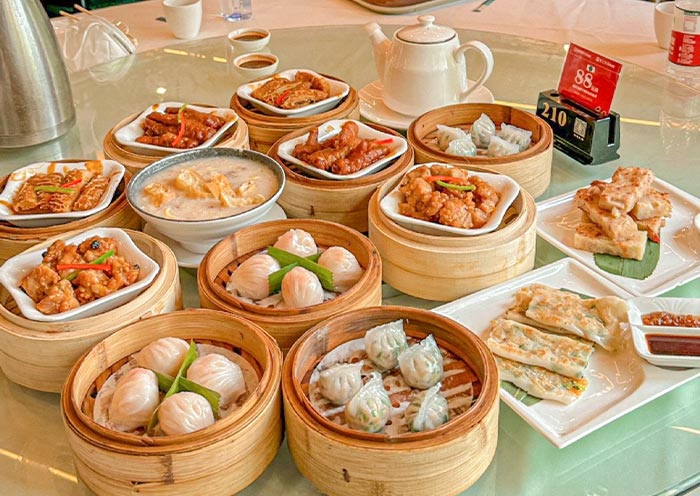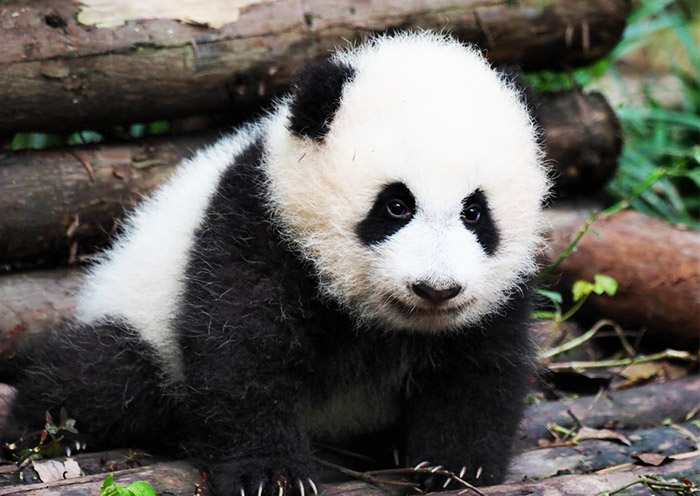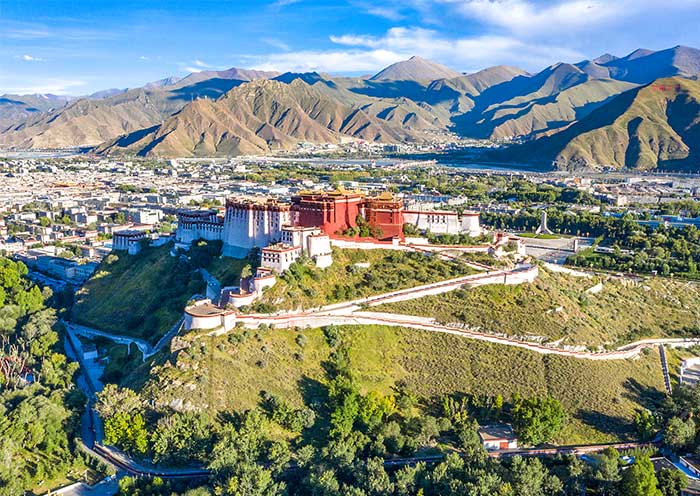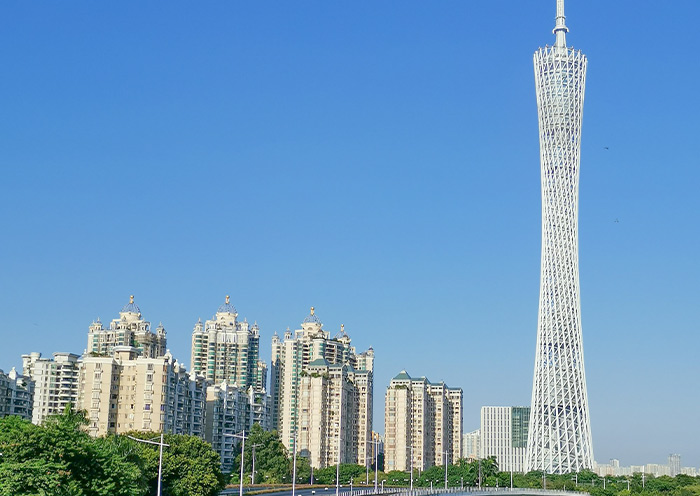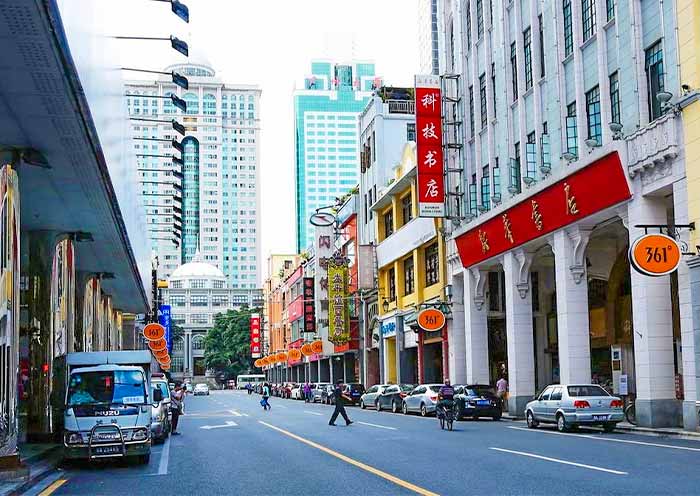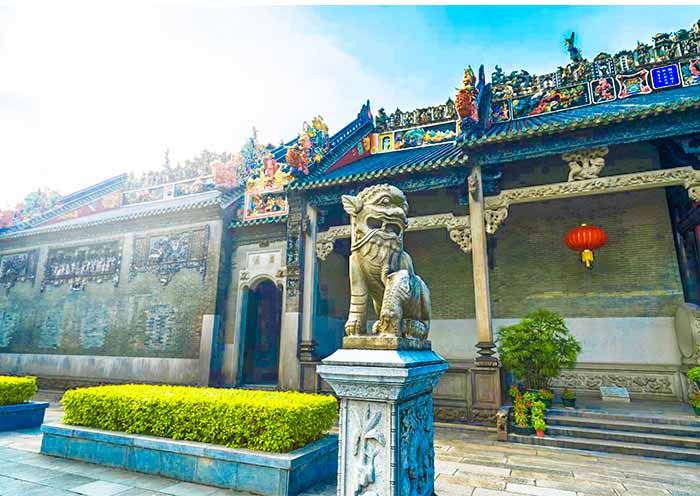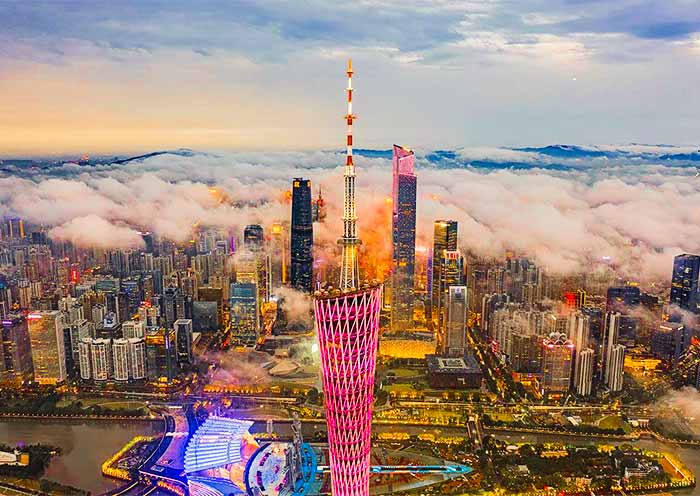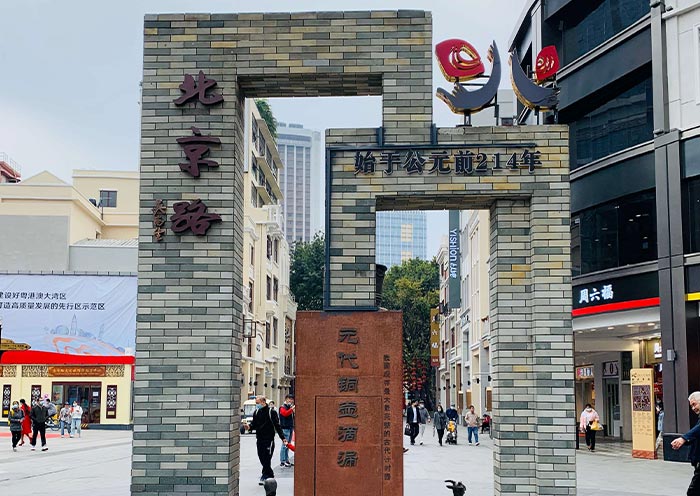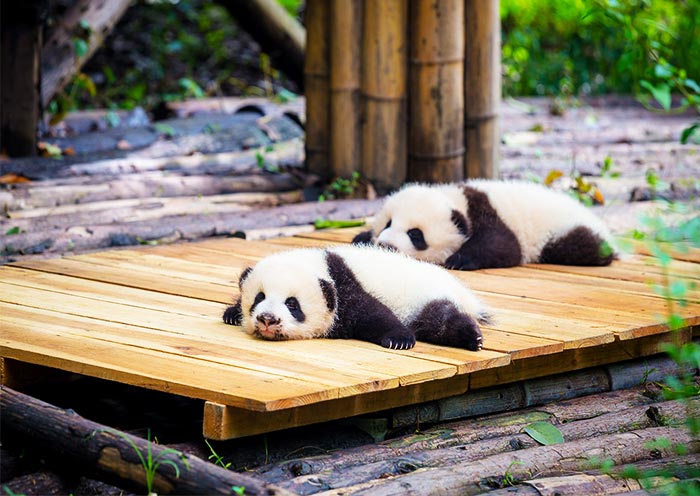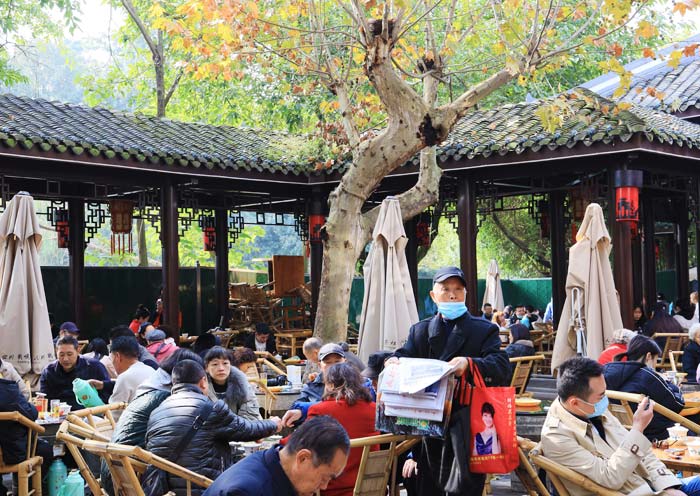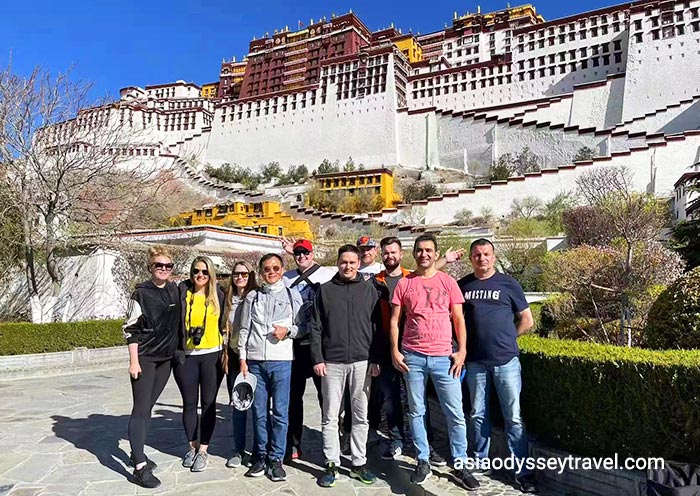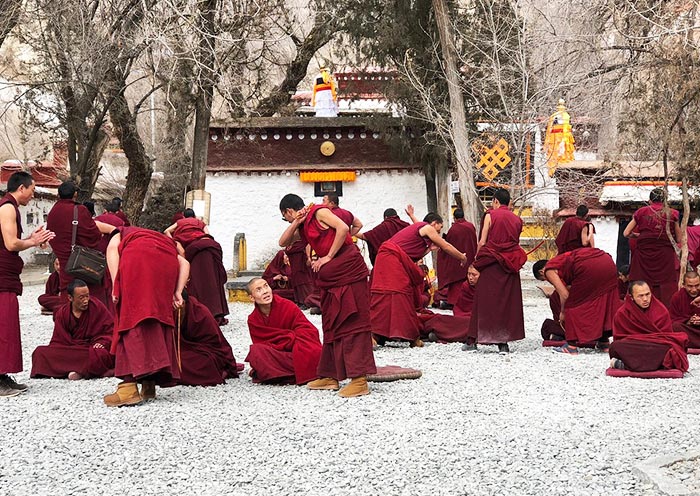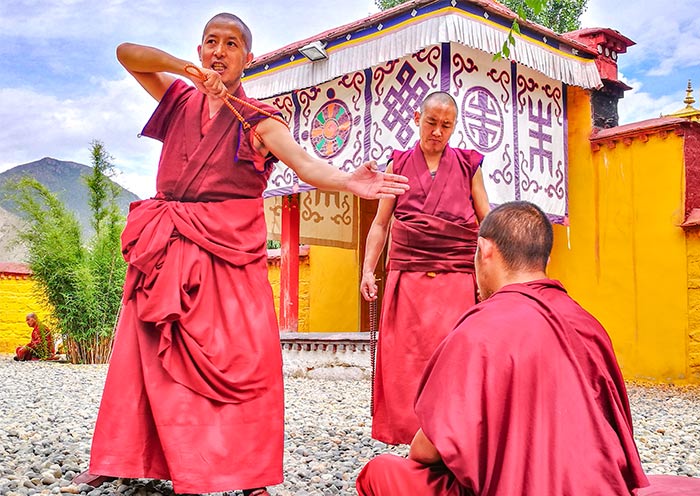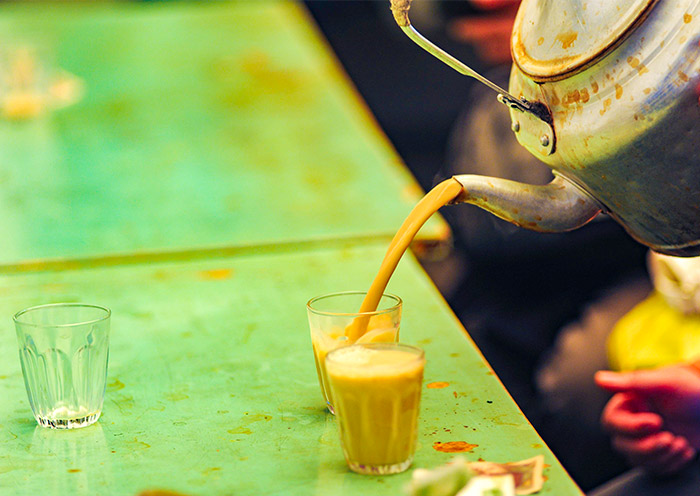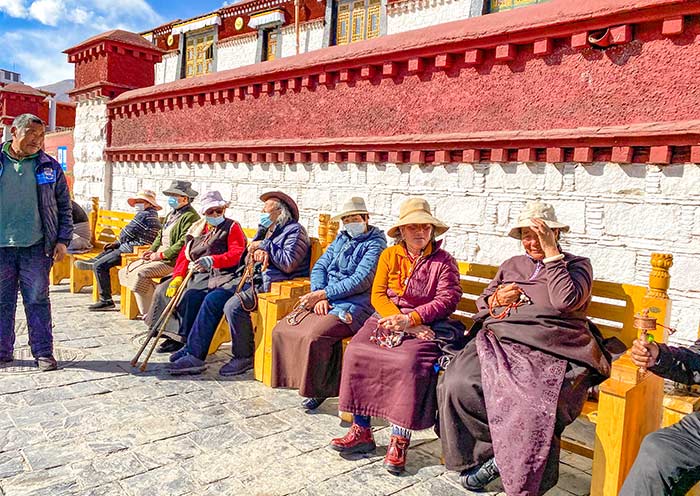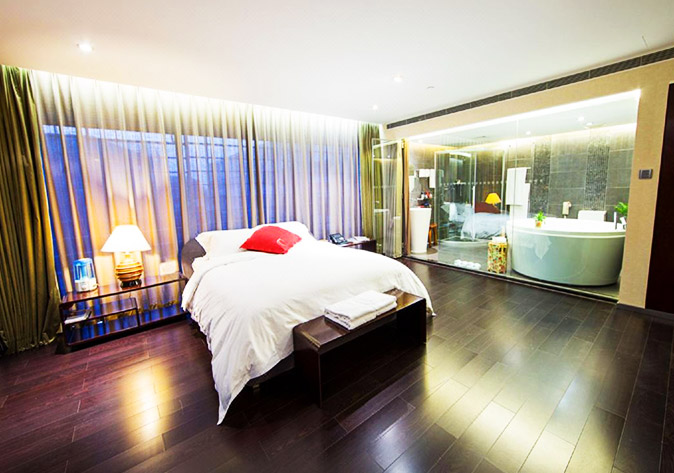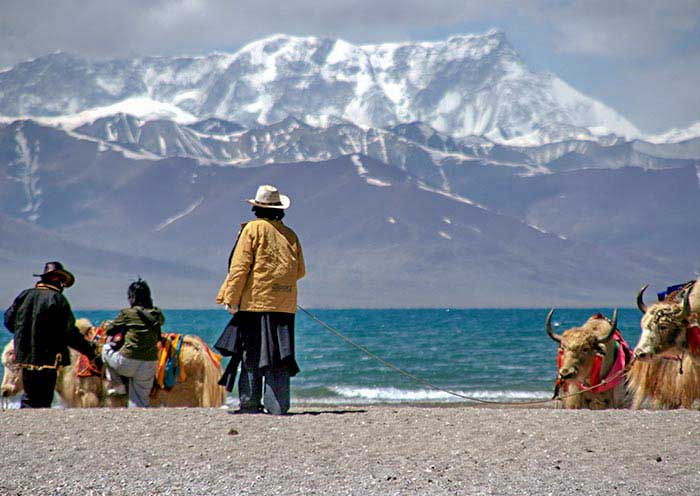Full-day exploration of Guangzhou City, the capital city of Guangdong province and the third-largest city in China (after Shanghai and Beijing). Through its Ancient Central Axis and New Central Axis, you can trace back to the "Origin" of Guangzhou and embrace the "Future" of Guangzhou by visiting the top attractions of Guangzhou such as Chen Clan Ancestral Hall, Yuexiu Park, Nanyue King Mausoleum Museum, Beijing Road, Huacheng Square, Canton Tower, Pearl River. Sure you will start to enjoy the Cantonese food today from the traditional Guangzhou morning tea to all kinds of Cantonese cuisine, a dim sum meal, and local snacks.
Begin your journey at the Chen Clan Ancestral Hall (Chen Family Ancestral Hall陈家祠), representing traditional Lingnan architecture (岭南建筑) and Lingnan culture. The clan concept in the Lingnan Region (which covers Guangdong and Guangxi provinces, and parts of Fujian) is very strong, and people attach great importance to the worship and memorial of their ancestors. The ancestral hall is the place where people worship their ancestors. The Chen Family Ancestral Hall stands as the largest, best-preserved, and most exquisitely decorated ancestral hall-style architecture in China, earning it the title of the "Jewel of Lingnan Architectural Art". The hall showcases the "Three Carvings" (三雕) - stone, brick, and wood carvings; the "Two Moldings" (两塑) - ceramic and lime sculptures; and additionally, the intricate cast ironwork and exquisite color paintings, together recognized as the "Seven Wonders" (七绝). You will love the various legendary divine beasts of China that stand on the roofs. The Chen Clan Ancestral Hall uses the famous Shiwan Clay Sculptures (石湾陶塑) on its roof, commonly known as "Shiwan Ridge Tiles"(石湾瓦脊). These ridge tiles are produced in Shiwan Town (石湾镇), where the Nanfeng Ancient Kiln is located (we will visit it tomorrow). Each ridge tile has a unique decorative theme, showcasing legends, stories from Cantonese opera (粤剧), folk auspicious patterns, and a total of 1,109 sculpted figures. The Chen Clan Ancestral Hall also houses the Guangdong Folk Art Museum, where you can witness traditional Guangdong crafts such as ivory carvings, jade sculptures, Guangdong embroidery, and Guangdong-colored ceramics.
Then, you can pay a visit to Yuexiu Park (越秀公园), one of the landmarks of Guangzhou, like the locals. With Yuexiu Mountain in the center, the park has remnants from over 2,000 years ago left by the Nanyue King Zhao Tuo, hence its initial name "Yue King Mountain." Sun Yat-sen used to visit Yuexiu Mountain for reading and official duties. With a stroll to the Five Rams Sculpture (五羊石雕), you will learn why Guangzhou got its nickname as the "City of Rams"(羊城). According to the lore, during a severe famine thousands of years ago, five immortals rode into Guangzhou on five rams and presented the people of Guangzhou with rice stalks held in their mouths and wished the region to be forever free from famine. After their departure, the five rams transformed into stone. Now, it not only embodies the city spirit of gratitude, compassion, mutual assistance, diligence, and bravery but also becomes a symbol of Guangzhou. Don't forget to visit the Zhenhai Tower (Five-Storied Pagoda镇海楼self-pay). During the Ming Dynasty (600 years ago), it was the highest building in Guangzhou, and a good place for the ancient people of Guangzhou to enjoy the panoramic view of the Pearl River (珠江) and Baiyun Mountain (白云山). This tower now hosts the Guangzhou Museum, which serves as a crucial venue for collecting and displaying historical artifacts of Guangzhou. Also perched on the mountain is the Sun Yat-sen Monument (中山纪念碑), built to commemorate the democratic revolutionary Sun Yat-sen (孙中山).
After the Yuexiu Park tour, time to explore the Western Han Dynasty Nanyue King Mausoleum Museum(西汉南越王墓博物馆). Here, you'll get to witness firsthand the genuine tomb of Zhao Mo, the second emperor of the Nanyue Kingdom during the early years of the Western Han Dynasty (2,000 years ago西汉). The tomb is the largest and the best preserved color-painted stone chamber found to date in the Lingnan region in South China and has unearthed numerous artifacts. The museum serves as a reminder of Guangzhou's ancient history, the Nanyue Kingdom was a significant regional power and provides crucial insights into the Nanyue culture. Among all the 1,000 pieces of cultural artifacts, you won’t miss the spotlight “Jade Burial Garment” which is made up of 2,291 pieces of jade, and also a collection of over 400 delicate ceramic pillows.
After that, head south to reach Beijing Road (北京路) - one of the most popular pedestrian streets in Guangzhou. This vibrant street offers a combination of global brands and local boutiques, as well as a wide range of dining options, from local street food to dim sum and Cantonese cuisine from high-end restaurants. Known as Guangzhou's "millennium-old pathway", Beijing Road, once the nerve center of Guangzhou's political, economic, and cultural activities, has been the city's central axis since its establishment, with the city expanding outward from this starting point. As you meander down the street, take note of the transparent glass panels underfoot. These panels offer a unique window into the past, revealing 11 ancient road layers from five historical periods: the Southern Han, Tang, Song, Ming, and Qing dynasties, as well as the base of the Song Dynasty's Gongbei Tower.
Next, you will shift towards the contemporary heartbeat of the city—the New Central Axis. Start your exploration at the Zhujiang New Town (珠江新城), which is Guangzhou's central business district and the symbol of its modern skyline. Home to towering skyscrapers: the sleek Guangzhou IFC Tower and the majestic CTF Finance Center. Looming in the distance is the iconic Canton Tower, an astonishing feat of engineering soaring to 600 meters. Locally, these three titans are affectionately dubbed "Guangzhou Three Piece Set" (广州三件套). The heart of the New Central Axis, Huacheng Square (花城广场), is a sprawling green urban park and public space surrounded by landmarks like the Guangzhou Opera House, designed by the famous architect Zaha Hadid, and the new Guangzhou Library, the Guangdong Provincial Museum. Most importantly, appreciate the slim outline of the iconic Canton Tower (广州塔) on the opposite bank of Pearl River. The square comes alive in the evening, with water features, light shows, and the shimmering reflections of the city's skyline in its man-made lakes.
Lastly, have a stroll along the Pearl River (珠江), the mother river of Guangzhou, especially during the evening. With the city lights reflecting on the water, and the famous Pearl River Cruise passing by, it's a picturesque scene blending the old and new worlds of Guangzhou. As you conclude your journey along the Old &New Central Axis, you're left with an impression of a city that respects its past, yet eagerly embraces the future.
Evening Optional Activity: Pearl River Night Cruise (around 60 min per tour)
Dive into Guangzhou's enchanting night atmosphere with a memorable cruise along the Pearl River. A night cruise (from 19:00 to 22:00) provides an unmatched vantage point to admire Guangzhou's skyline. Drift past iconic Guangzhou landmarks such as the Canton Tower, which shines brilliantly against the night sky, and the beautifully illuminated bridges that stretch across the river.

